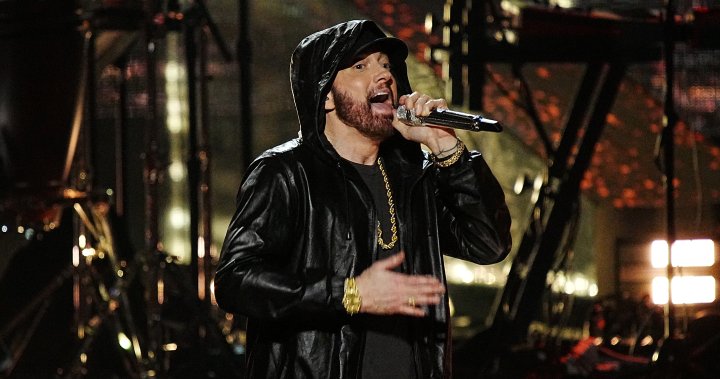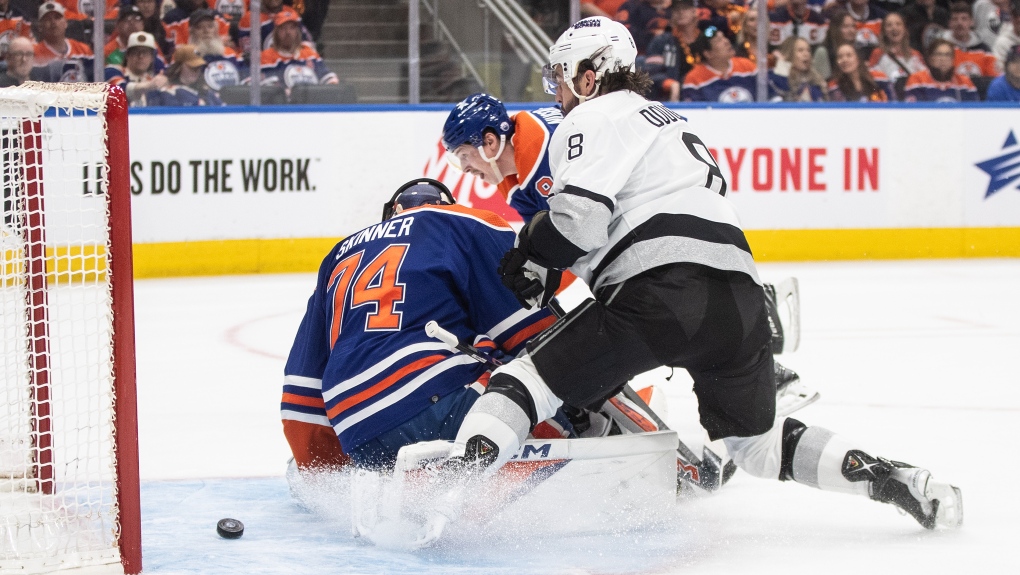Ukrainian Defence Minister Oleksii Reznikov gave Britain the thumbs up as he took a ride in what he said was the first British Challenger 2 main battle tank to arrive in Ukraine.
Britain said in January it would send 14 of the tanks to Ukraine, which is preparing for a possible counter-offensive against Russian forces that invaded 13 months ago.
Reznikov wrote on Twitter that the tanks had “recently arrived in our country,” and posted a video that showed him sitting in one of a long line of tanks in an open field, all of them flying Ukraine’s yellow and blue flag.
“It was a pleasure to take the first Ukrainian Challenger 2 MBT [main battle tank] for a spin,” Reznikov wrote. “These fantastic machines will soon begin their combat missions.”
It was a pleasure to take the first Ukrainian Challenger 2 MBT for a spin. <br>Such tanks, supplied by the United Kingdom, have recently arrived in our country. <br>These fantastic machines will soon begin their combat missions. <br>Thank you, <a href=”https://twitter.com/RishiSunak?ref_src=twsrc%5Etfw”>@RishiSunak</a>, <a href=”https://twitter.com/BWallaceMP?ref_src=twsrc%5Etfw”>@BWallaceMP</a>, and the 🇬🇧 people. <a href=”https://t.co/zoCRmKdBnN”>pic.twitter.com/zoCRmKdBnN</a>
—@oleksiireznikov
In the video, he gave the thumbs up sign and thanked British Defence Secretary Ben Wallace for the tanks.
Germany’s Defence Ministry said on Monday that 18 Leopard 2 battle tanks and 40 Marder infantry fighting vehicles had also arrived in Ukraine.
Ukraine has also said it desperately needs shells that are critical to its war effort. French Defence Minister Sébastien Lecornu said on Tuesday that France will double its supplies of 155-millimetre shells to Ukraine to about 2,000 a month.
UN’s Grossi back to address nuclear plant concerns
Meanwhile, Ukrainian President Volodymyr Zelenskyy said Russian troops were holding the Zaporizhzhia nuclear plant “hostage” and its safety could not be guaranteed until they left it, while his forces shut off the front-line town of Avdiivka as they planned their next move.
Russian troops have occupied the nuclear power plant, Europe’s largest, since the early weeks of the invasion of Ukraine and have shown no inclination to relinquish control.
“Holding a nuclear power station hostage for more than a year — this is surely the worst thing that has ever happened in the history of European or worldwide nuclear power,” Zelenskyy said in his nightly video address.
His comments followed a meeting with Rafael Grossi, the director general of the International Atomic Energy Agency (IAEA), in Ukraine. A team of IAEA experts has since September been stationed at the plant, which Kyiv has accused Moscow of using as a shield for troops and military hardware.
Initiatives on restoring safety and security are “doomed to failure” without a withdrawal of Russian troops from the plant, Zelenskyy said in comments posted on the presidential website.
Grossi has repeatedly called for a safety zone around it and is due to visit it again this week. He has tried to negotiate with both sides but said in January that brokering a deal was getting harder.
In warnings to the West against continuing to arm Ukraine, President Vladimir Putin and other Russian officials have increasingly played up the risks of nuclear weapons being used in the war. On Saturday, Putin said he had struck a deal to station tactical nuclear weapons in neighbouring Belarus, an ally of Moscow.

Belarus’s Foreign Ministry said on Tuesday it had agreed to host the nuclear weapons in order to protect itself after years of “unprecedented pressure” from the West. It said the move did not contravene international non-proliferation agreements.
Ukraine and its Western allies have denounced the plan.
‘Post-apocalyptic’ conditions in Ukraine town
Meanwhile, Russia launched a total of 15 Iranian-made Shahed drones overnight on Ukraine, the Ukrainian military said early on Tuesday, adding that its forces had destroyed 14 of them.
On the battlefield, Russian forces appear to be focusing on Avdiivka, 90 kilometres south of the devastated mining town of Bakhmut in Ukraine’s eastern Donetsk region. Ukraine shut Avdiivka to civilians on Monday, with an official describing it as a “post-apocalyptic” wasteland.
WATCH | De-mining operations complex, include Ukraine’s wheat fields:
Deadly landmines blanket a vast amount of land in Ukraine, creating hazards for civilians and the military. Canadian troops are training Ukrainians how to find and defuse the hazards, a skill that will be needed for years to come.
The Ukrainian military has warned that Avdiivka could become a “second Bakhmut,” which has been reduced to rubble in months of fighting described by both sides as a “meat grinder.”
Denis Pushilin, the Russian-installed leader of the part of Donetsk region under Moscow’s control, said on Tuesday that Russian forces were still moving forward in Bakhmut despite fierce Ukrainian resistance. He said they had almost taken control of a metals plant on the western side of the Bakhmutka River.
His claims ran counter to Ukrainian and Western assertions that the situation in Bakhmut is stabilizing as the Russian offensive falters.
Ukrainian forces reported repelling 62 Russian assaults along the eastern front over the past 24 hours. Reuters could not verify the battlefield reports.







More Stories
Brave Little Hunter is free: Orca calf swims out of lagoon where it had been trapped for a month | CBC News
#MeToo founder says Weinstein’s rape reversal hasn’t killed the reckoning’s movement | CBC News
Supreme Court reaffirms independence of military judges, dismisses challenges | CBC News